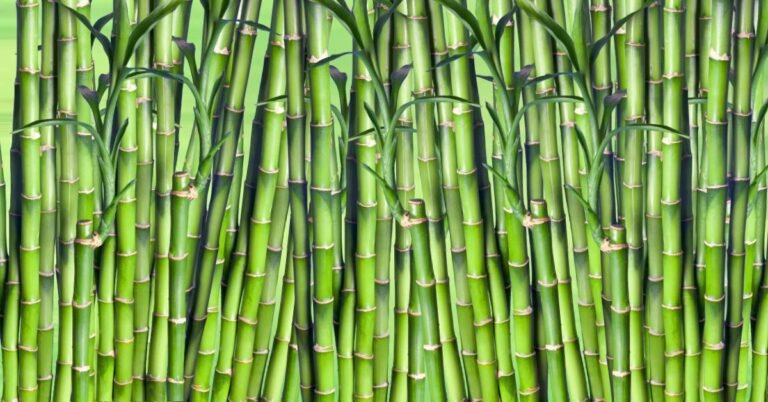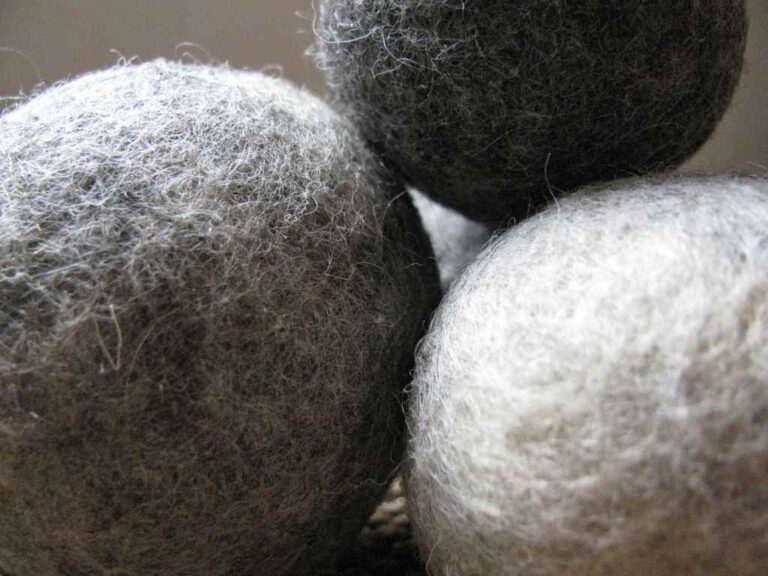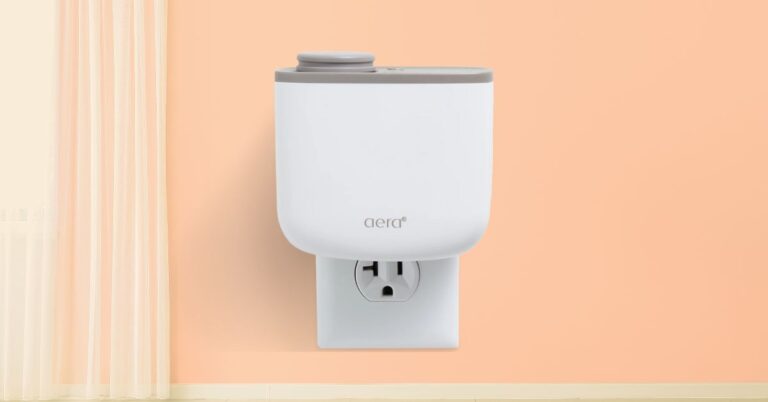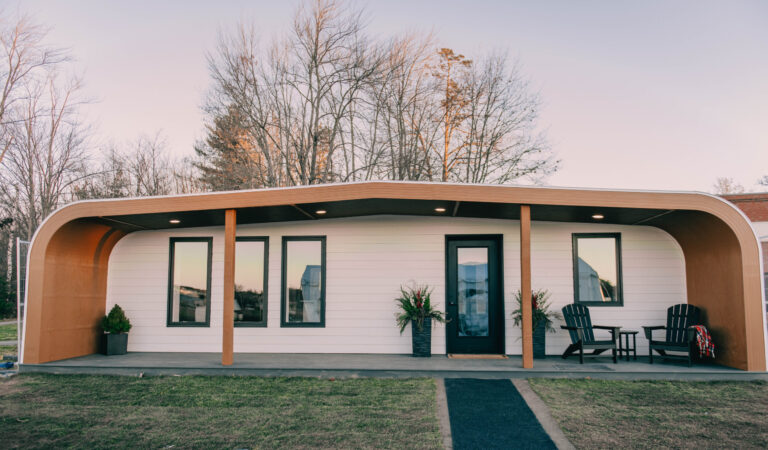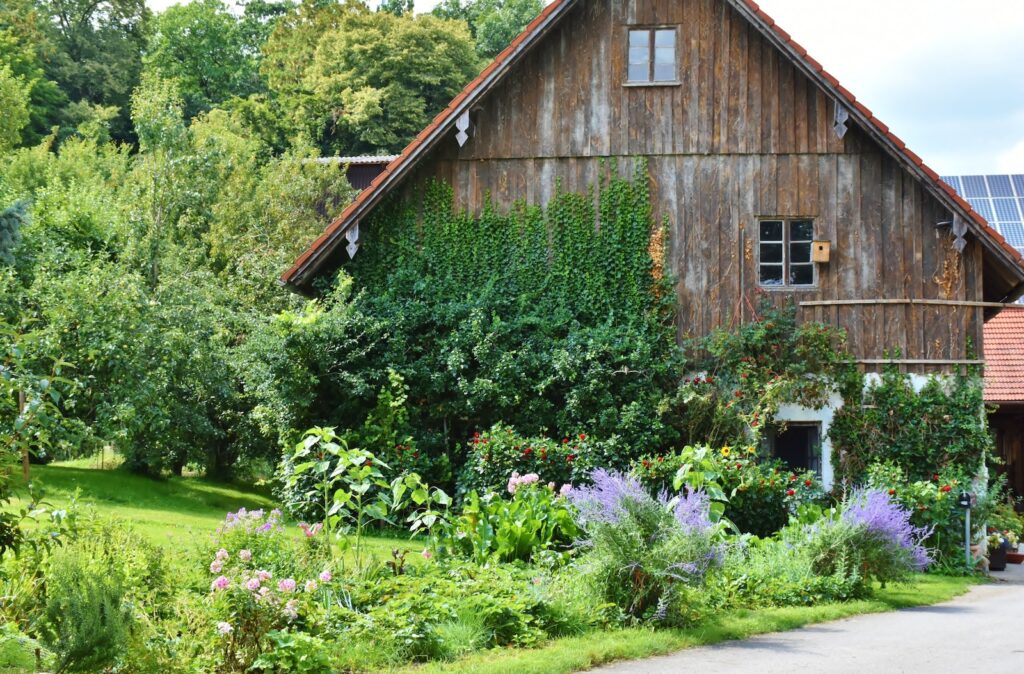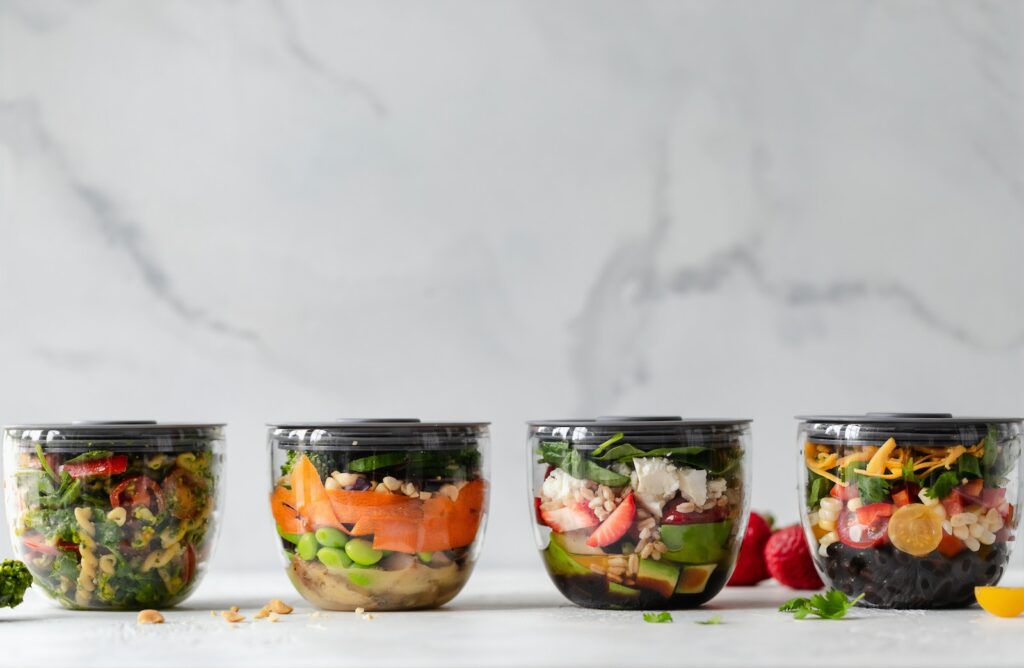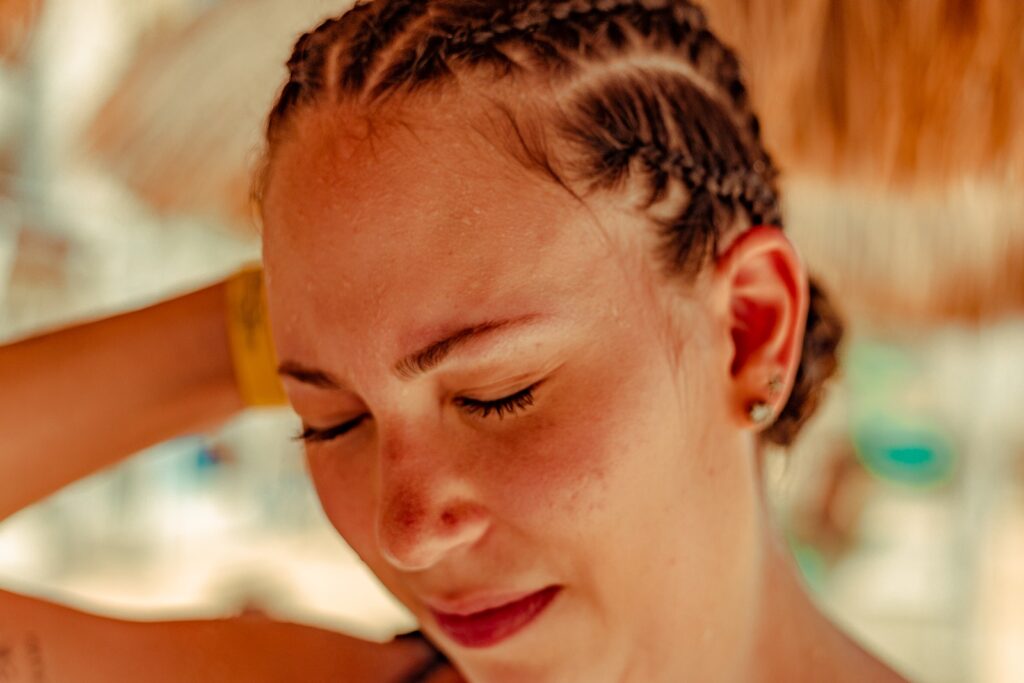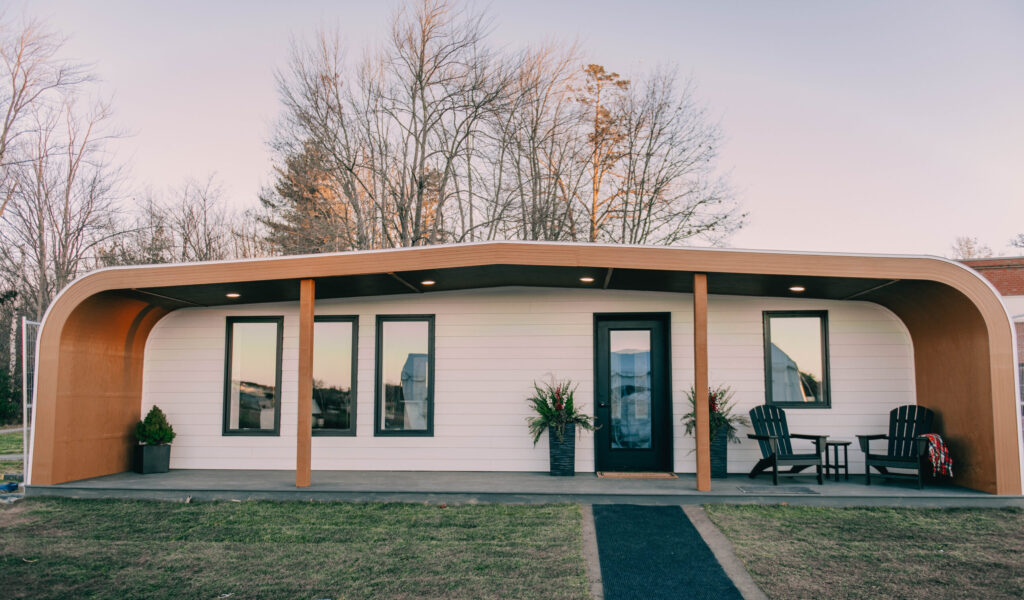Picture this – you’re decorating your home for the holidays, filling each corner with joy. Yet, did you know that the centerpiece of your decorations, your Christmas tree, could be a hidden source of toxins? In this guide, you’ll discover the safest options for non toxic Christmas trees in 2024, ensuring the festive spirit and your family’s health remain intact.
Dive in to learn about the real vs. artificial tree debate, understand the materials used in artificial trees, and explore the best non-toxic alternatives available.
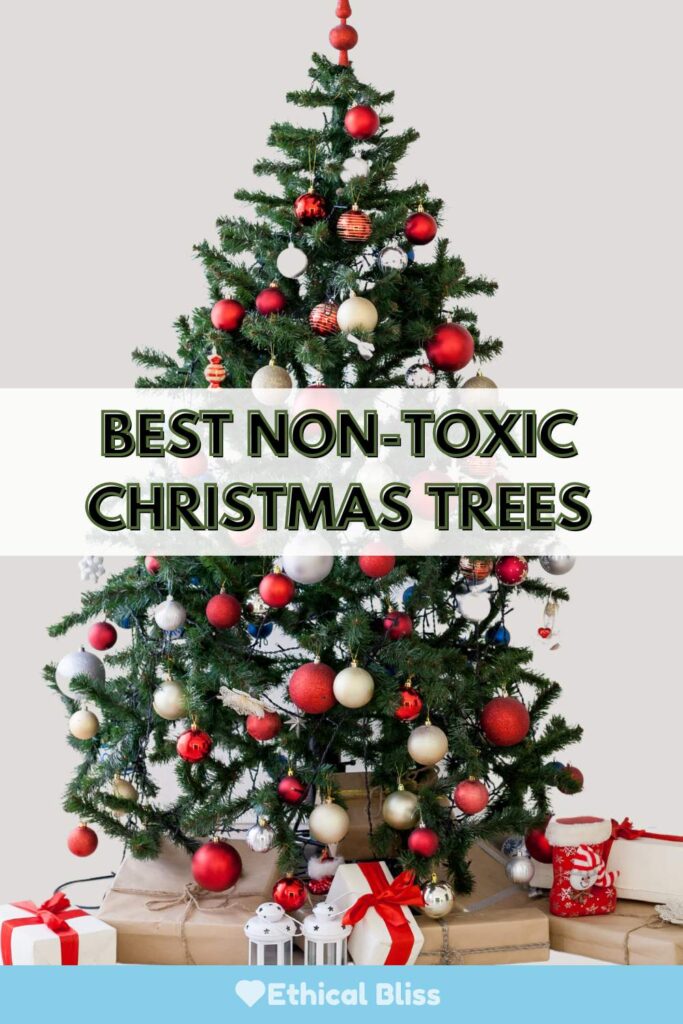
This post may contain some affiliate links. If you happen to purchase through them, we might earn a small commission. Learn more about it here.
Click here to jump to our favorite non toxic Christmas tree options.
Real Christmas Trees
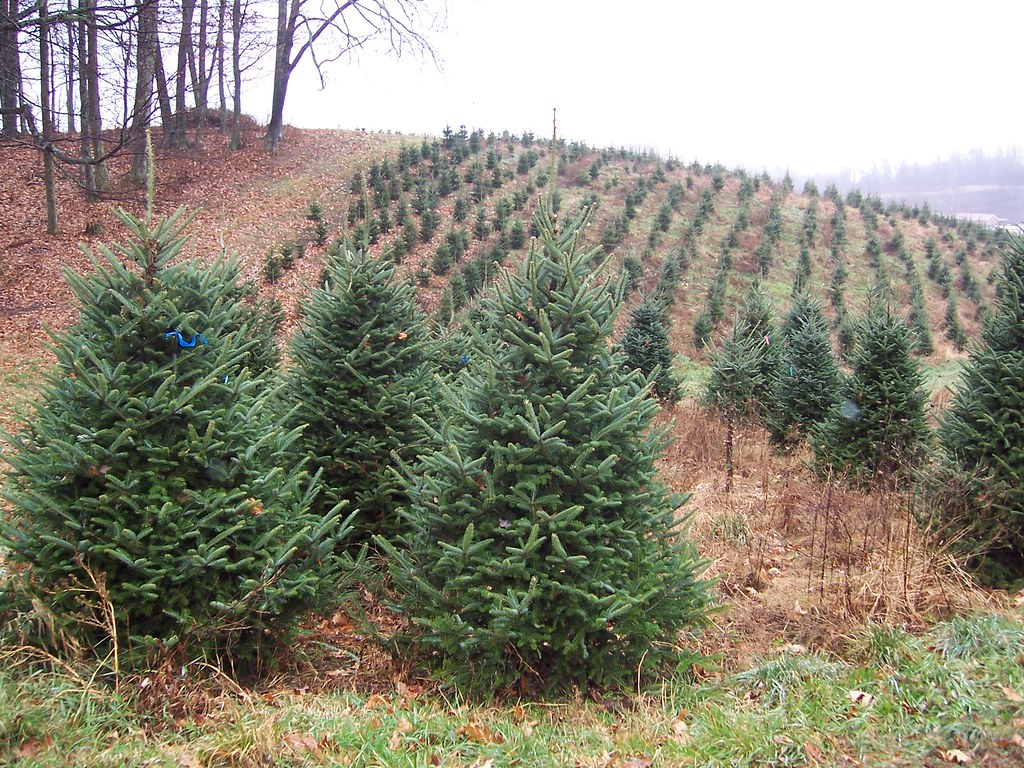
Benefits of Real Trees
Real Christmas trees come with several benefits worth considering. Their authenticity and natural beauty are hard to beat. They are entirely natural and biodegradable, making them an eco-friendly option. This means they won’t contribute to plastic waste in landfills like artificial trees.
Moreover, real trees do not contain toxic chemicals or endocrine disruptors commonly found in artificial trees. This makes them an excellent choice for maintaining healthy indoor air quality during the holiday season.
Concerns with Real Trees
While real Christmas trees have their merits, there are some concerns to be aware of. Trees, including pine tree needles and sap, contain allergens, so they are not the best Christmas trees for allergies. So, if you or someone in your household is allergy-prone, you might consider alternative options to avoid unwanted symptoms during the holiday season.
Another concern with real Christmas trees is their tendency to dry out over time, which can turn them into a fire risk. As the needles and branches dry, they become more susceptible to catching fire, especially if they are placed near heat sources like radiators or fireplaces. To mitigate this risk, keep your tree well-watered and monitor it regularly to ensure it remains hydrated throughout the holiday season.
Additionally, some people use Christmas tree preservatives to prolong the life of their real trees. While these preservatives can be effective, it’s essential to exercise caution when selecting and using them, particularly if you have a pet or crawling children. Some preservatives may contain chemicals or additives that could be harmful if ingested off curious paws or fingers.
Real trees naturally shed needles over time, which can create a mess in your home. Constantly cleaning up fallen needles can be a hassle, particularly if you have young children or pets who may pick them up or ingest them.
Additionally, disposing of a real tree after the holiday season can be inconvenient and may require a trip to a recycling center or a specific disposal service.
Finally, real trees can harbor pests, like insects or spiders, which may become active when the tree is brought indoors.
Organic Christmas Trees
Organic Christmas trees are a fantastic choice for those seeking a safer option than a conventional real tree. Organic tree farming practices prioritize environmental sustainability and avoid using synthetic pesticides or fertilizers.
Organic Christmas tree farms offer a range of tree species, ensuring you can still enjoy the scent and tradition of a real tree while minimizing potential health risks. By choosing organic, you support sustainable agriculture and reduce the environmental impact of your holiday celebration.
Artificial Christmas Trees
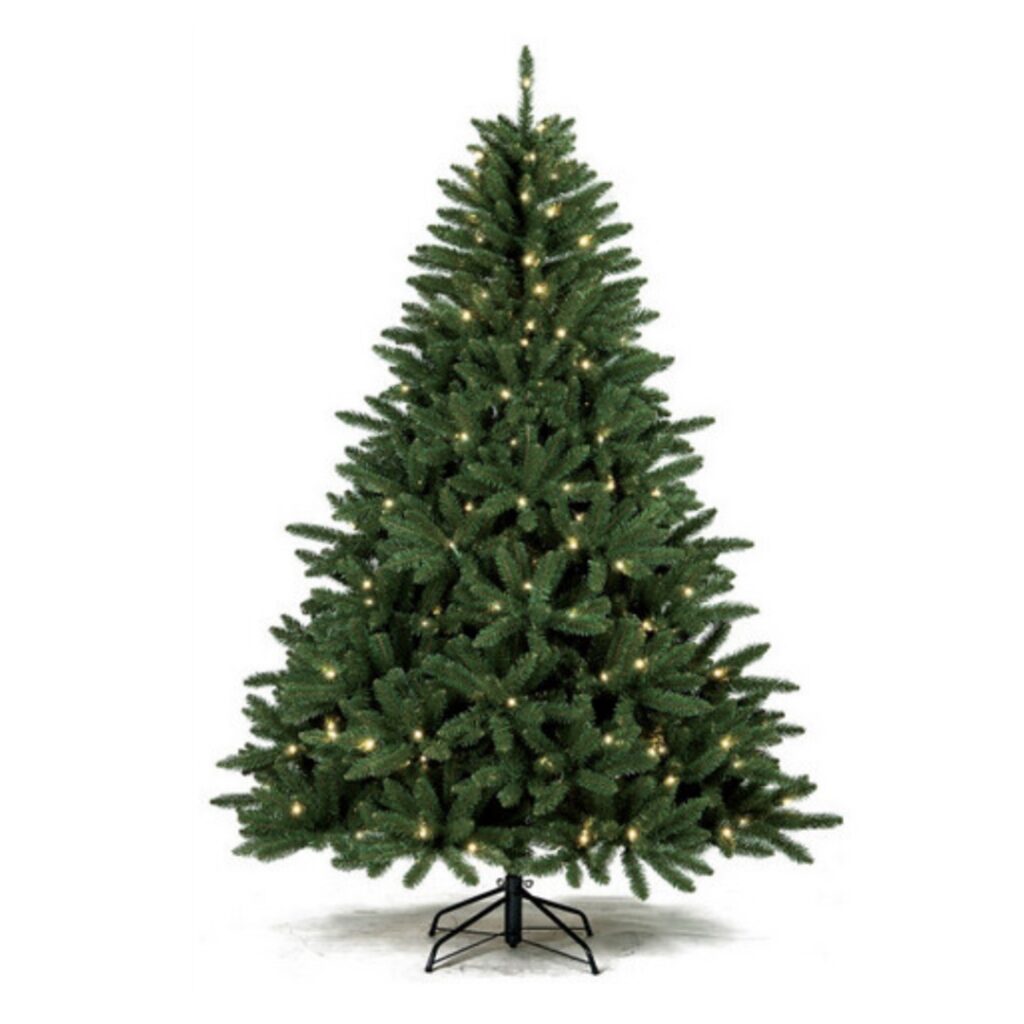
Benefits of Artificial Christmas Trees
On the other hand, fake Christmas trees offer convenience and can last for many years. Unlike real trees with a limited lifespan, artificial trees can last many years, often a decade or more.
Artificial trees are low maintenance. They don’t shed needles or require water.
They are simple to assemble and disassemble. They don’t need to be disposed of after the holiday season, and you can store them easily.
While the initial investment of an artificial tree may be higher than purchasing a real tree, they are cost-effective over the long term. You don’t have to buy a new tree yearly or pay any costs associated with Christmas tree preservative or disposal.
In terms of fire risk, artificial trees are generally safer. They are less likely to dry out and become combustible.
Concerns with Artificial Trees
The World Health Organization has warned about potential health risks associated with the chemicals in artificial Christmas trees. These trees are typically made from polyvinyl chloride (PVC).
PVC is made with vinyl chloride, which, according to the National Cancer Institute, is associated with an increased risk of liver, brain, lung, and blood cancers. PVC trees can also contain lead, which is especially harmful to children.
In addition, PVC plastic production, use and disposal can release harmful chemicals, including dioxins, into the environment. According to the World Health Organization, long-term exposure to dioxins is linked to immune, endocrine, nervous, and reproductive system impairment.
Many artificial trees are also treated with chemical flame retardants, which can release toxic fumes when exposed to heat or fire. Furthermore, fake trees may emit VOCs, affecting indoor air quality.
Safer Alternatives
Thankfully, there are safer alternatives on the market. To make the holiday season both festive and eco-friendly, some artificial Christmas tree brands are making significant strides in their materials selection. Recognizing the environmental concerns associated with PVC (polyvinyl chloride), these forward-thinking companies are now opting for safer alternatives such as PE (polyethylene) and PP (polypropylene) in the construction of their trees. This shift reduces the reliance on PVC and ensures that the trees are safer for consumers and the planet. Look for certifications and labels that indicate low toxicity and reduced environmental impact.
Wooden Christmas tree alternatives are gaining popularity as eco-friendly and non-toxic options. These trees are typically made from sustainably sourced wood and offer a unique, rustic charm.
There are also felt Christmas trees for toddlers and even older kids that are fun alternatives. Research and choose a brand that aligns with your values and safety priorities or check out our favorites below.

Help me get started!
Do you want to live a less-toxic, more eco-friendly lifestyle but have no idea where to begin? Here’s our “Non-Toxic 101” guide to get you started today!

Tips for Ensuring Safety, Especially for Young Children
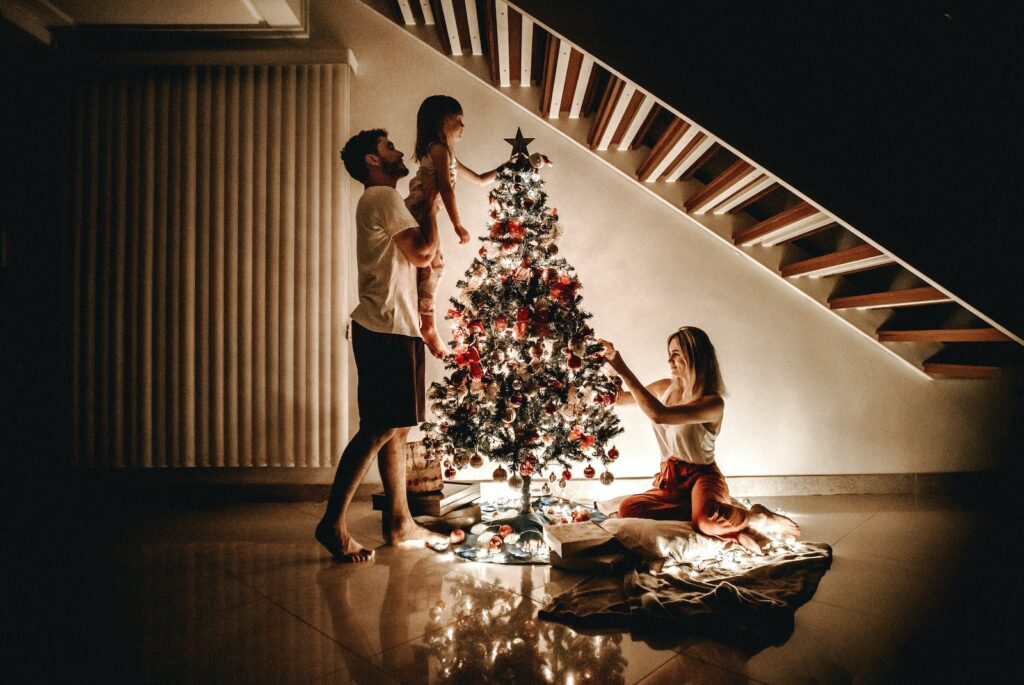
Safety is paramount for young children. They are more vulnerable to the risks associated with toxic materials, so take extra precautions during the holiday season.
Consider placing a safety gate or barrier around the tree to prevent young children from touching or ingesting needles, sap, or decorations. Keep small and potentially hazardous ornaments out of their reach.
If you have an artificial tree, ensure it has the lowest amount of lead and other toxic materials possible. If you have very young children, consider a felt Christmas tree for toddlers.
To improve indoor air quality, use an air purifier with a HEPA filter like the Coway Airmega. This can help remove allergens and toxins from the air, creating a healthier environment for your family. If your child has allergies consider an artificial tree which may be the best Christmas tree for allergies.
Furthermore, choose non-toxic decorations and toys during the holiday season. For a list of our favorite organic, eco-friendly stuffed toys, click here. Many traditional ornaments and lights contain chemicals or paints that can be harmful if ingested or touched by curious children. Opt for safer, eco-friendly alternatives.
Are Christmas Trees Safe for Pets?
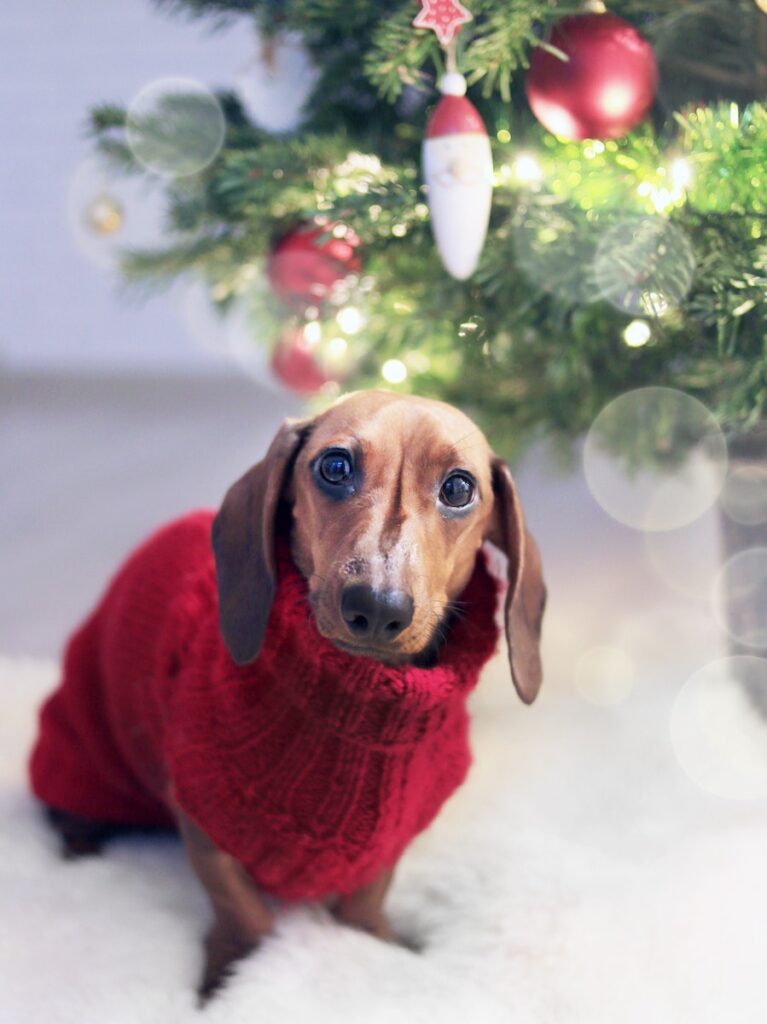
Christmas Trees can be dangerous for pets. Chewing on ornaments, lights, or electric cords can lead to injuries or even electrical shocks. Additionally, many traditional decorations, such as mistletoe, holly, and poinsettias, are toxic to pets when ingested, making it crucial to keep these out of their reach or opt for safer alternatives. The water in the tree stand, often treated with preservatives, can also be harmful if consumed.
Cats may see a Christmas tree as a climbing opportunity, leading to instability and potential accidents. To keep their pets safe, pet owners should be aware of these risks and take necessary precautions. This includes careful ornament placement, avoiding toxic plants, and supervising pets near trees to minimize potential hazards. Finally if your pet has allergy issues consider an artificial tree which may be the best Christmas tree for allergies.
Our Favorite Artificial Christmas Trees and Unique, Unconventional Options
1. Balsam Hill True Needle Premium Line
Balsam Hill makes beautiful, realistic-looking artificial Christmas trees. Their True Needle Premium trees are made with mainly PE (polyethylene), though they contain some PVC.
Balsam Hill artificial trees do contain a flame retardant.
2. National Tree Company
National Tree Company makes realistic-looking trees at affordable prices.
When we contacted the company about the percentage of PE to PVC it varied based on the tree. For this Douglas Fir the breakdown by weight was PE 15%, PVC 15%, Lights 48%, Metal/Wire 20%, Thread 2%. We suggest contacting them if you have questions on a particular tree.
Like Balsam Hill, these trees do contain a flame retardant.
3. IKEA Vinterfint Christmas Tree
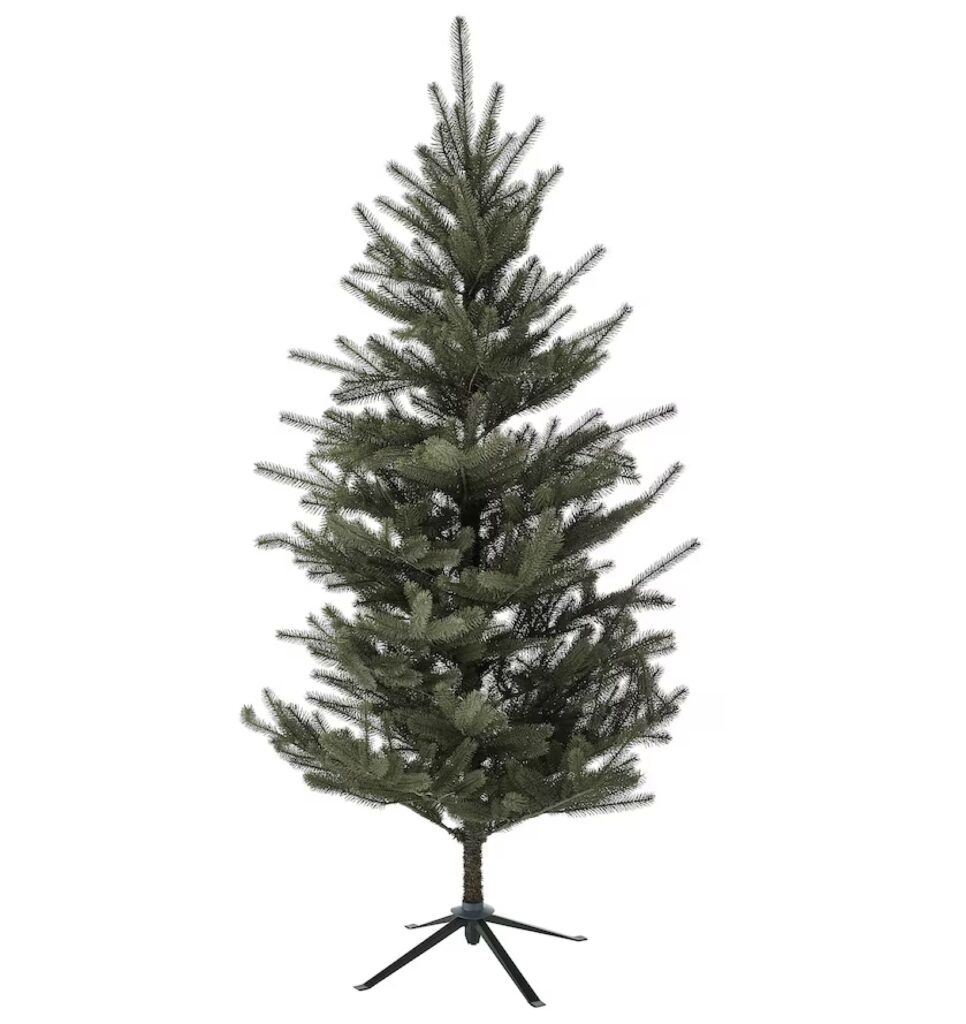
The Ikea Vinterfint collection contains no PVC. The ingredients are polyethylene plastic (min. 50% recycled), Steel, PET plastic, and polypropylene.
We chatted with IKEA, and they told us there were no flame retardants on the tree.
4. Aerwo Felt Tree
A felt Christmas tree for toddlers is a fun alternative to a traditional tree.
This tree is 3ft tall and made from durable 3mm thick felt. It comes with 26 detachable ornaments featuring beloved holiday icons.
5. GWhole Branch Ladder
Another fun alternative to a traditional tree is a wood branch ladder.
This one is made with wood branches and hemp rope.
Hang ornaments from the branches for a unique holiday display.
6. DIY Non Toxic Christmas Tree
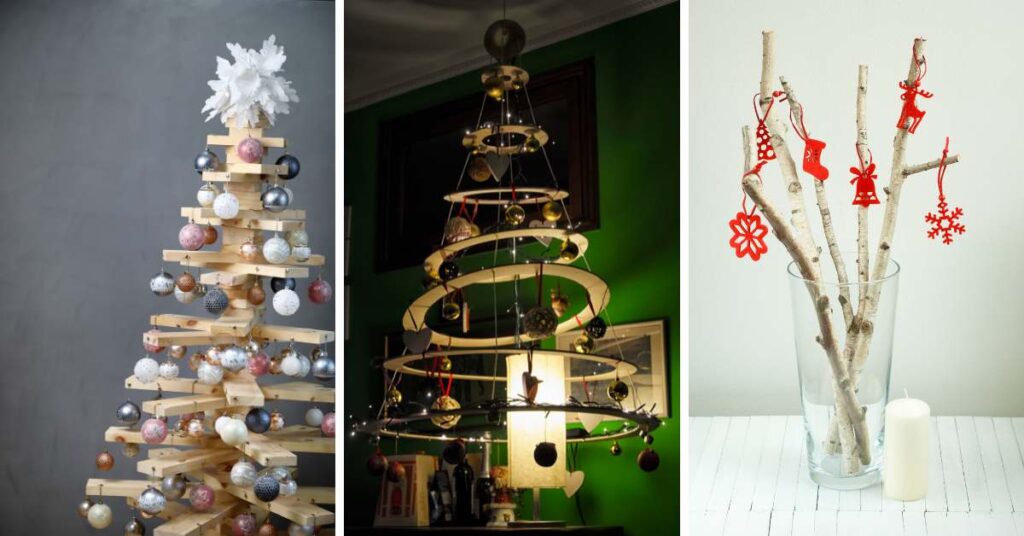
Alternatively, you can get creative and make a “tree” using branches from your yard placed in a vase, a children’s mobile, or create a customized wood Christmas tree.
7. Rent a Tree
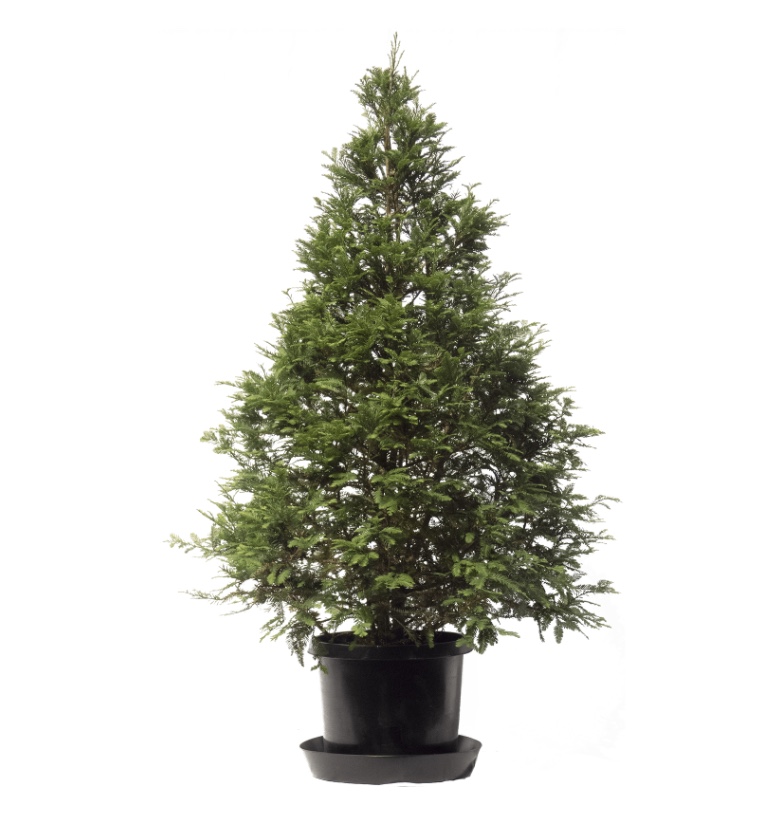
Yep, you can rent a live tree this Christmas season!
These sustainable Christmas trees are delivered to your home with care instructions and picked up after the holidays.
Companies across the United States offer this service, but each is generally limited to their local delivery area. For example, Living Christmas and Rent XMastree deliver only in the state of California. Search Google to find a company near you.
Making the Best Choice
Choosing a Christmas tree is not merely a matter of aesthetics. It has a significant impact on your indoor air quality and the health of your loved ones.
When searching for a non toxic Christmas tree for your holiday celebration in 2024, consider the following key points:
- Real Christmas trees are natural and biodegradable, and they lack toxic chemicals.
- Organic Christmas trees support sustainable agriculture and minimize environmental impact.
- Artificial trees often contain PVC, heavy metals like lead, and toxic flame retardants from the manufacturing process.
- Safer artificial alternatives exist, including low-toxicity trees with a lower amount of PVC and wooden tree options.
- Finding a 100% non toxic Christmas tree is near impossible. Focus on finding the least toxic Christmas tree that fits your needs and your budget.
- An artificial tree may be the safest Christmas tree for allergies.
- Consider a felt non-toxic Christmas tree for toddlers.
- Prioritize safety, especially for young children and pets, by securing the tree and using non-toxic decorations.
For added information, The National Christmas Tree Association provides insights into real and artificial trees.
By making an informed choice, you can ensure that your holiday season is not only festive but also safe and healthy.🎄






